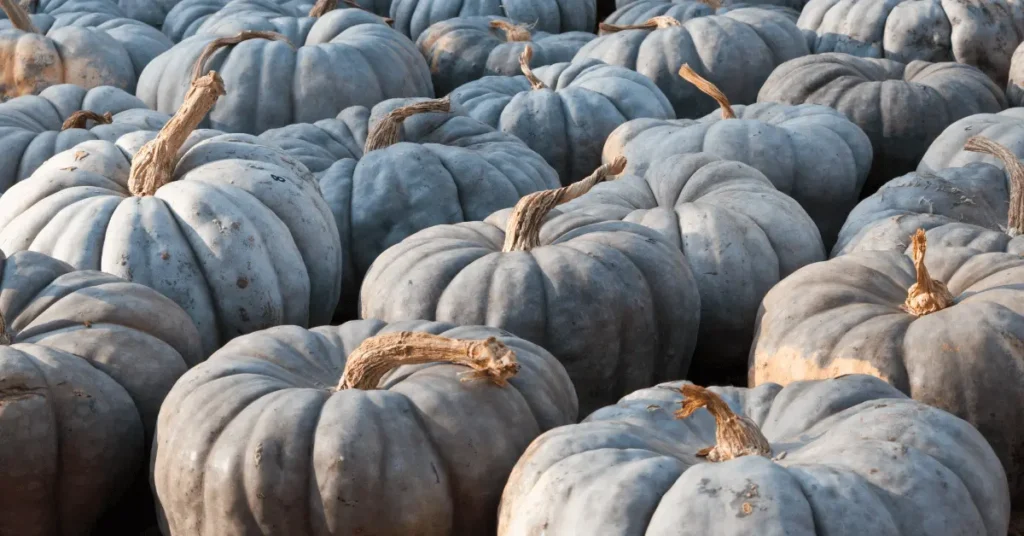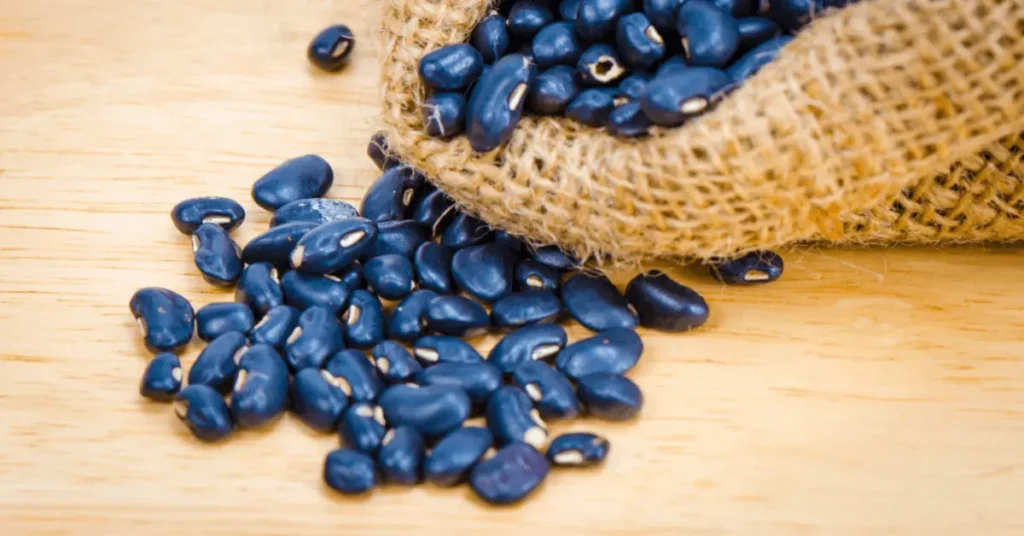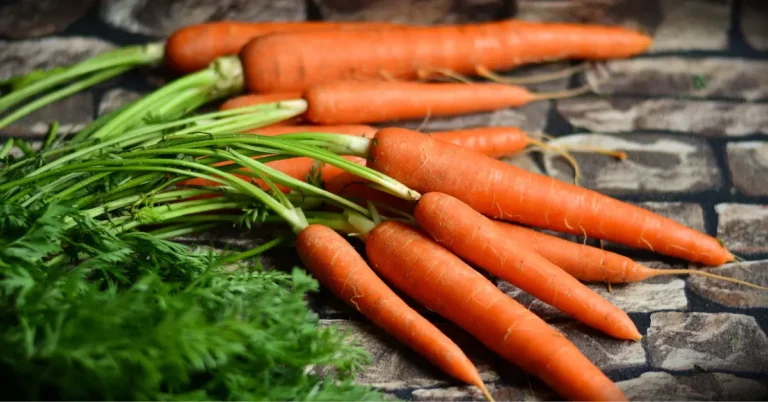Top 14 Blue Fruits and Vegetables & their Benefits
Did you know that some vegetables and fruits are naturally blue? Some blue fruits and vegetables look great and are highly nutritious. Vegetables of all colors have nutritional value, but brightly colored vegetables tend to have more antioxidants than pale vegetables.
With everything from blueberries to purple potatoes, these naturally vibrant options bring various flavors and powerful antioxidants. Taste new flavors and add some blue to your cooking!

How do blue Fruits and Vegetables get their color?
Anthocyanins, natural pigments, attribute the vibrant blue color to fruits and vegetables. Cell vacuoles contain water-soluble compounds that react to changes in pH, influencing their color.
The colors of anthocyanins change when exposed to acidic or basic conditions. They look blue or purple when they are in neutral or basic needs. The pH level of the fruit or vegetable and the particular variety of anthocyanin present both impact the intensity of the blue hue.
Anthocyanins give these colorful foods their blue color and antioxidant qualities.
Best Blue Vegetables
Here are some of the best blue vegetables.
Blue Corn:
Blue corn is a special corn from Mexico and the Southwest of the US. The Hopi Pueblo tribe created it around 1540. Unlike regular yellow corn, blue corn has a deep blue color. People use it to make things like tortillas, and it has more protein than yellow corn, making it a healthy and tasty choice!

Adirondack Blue Potato:
Adirondack Blue Potatoes are special spuds with a deep blue color inside and out. They’re great for baking and boiling; if you boil them, the water turns blue, making an excellent dye for Easter eggs or cloth. These potatoes add a unique and colorful twist to mashed or whipped potato dishes.
You’ll love Adirondack Blue Potatoes for their unique appearance and versatility! It’s packed with antioxidants, particularly anthocyanins, and is a good source of complex carbohydrates and fiber.
Indigo Rose Tomato:
The Indigo Rose Tomato is a unique and tasty variety known for its deep purple-black color. Its sweet, tangy flavor makes this small tomato an ideal addition to salads and snacks. The dark color is due to anthocyanins, which benefit the body.
Try adding the Indigo Rose Tomato to your garden for a pop of color and a burst of deliciousness! This variety offers the traditional benefits of tomatoes, like vitamin C and lycopene, with added antioxidant properties.

Blue Kale:
The blue kale is a leafy green vegetable with a bluish tint. Kale of this type contains various nutrients, including vitamins and antioxidants. Please put it in salads or smoothies or cook it as a side dish.
As well as providing multiple health benefits, its vibrant color adds a fun twist to your meals. Its antioxidant properties contribute to anti-inflammatory and heart health benefits.
Blue Cabbage:
Blue cabbage is regular red cabbage that turns blue when cooked in an alkaline liquid. This color change doesn’t affect its nutrition but gives it a nice blue appearance. So, it’s like a magical transformation in the kitchen, turning from red to blue. Enjoy the vibrant twist in your dishes.

Blue Carrots:
It stands out with its deep purple-to-blue coloring. Once more common, blue carrots faded into history when Dutch farmers created orange carrots for national pride. Yet, these vibrant blue roots still exist, rich in anthocyanins, just like their orange cousins. Although rare, you might find them in specialty markets.
Blue carrots’ unique color and health benefits make them a delightful addition to any meal. In addition to their high anthocyanin and beta-carotene content, they also have anti-inflammatory properties and assist in eye health and memory.
Blue Pumpkins:
Blue pumpkins are a special kind of pumpkin that looks a bit different. They have gray-blue skin, but inside, the flesh is orange. These pumpkins are less moist than regular ones, making them easy to cut and roast.
You can even eat the pumpkin skin, which adds an excellent color to mixed roasted veggies. So, if you want a unique and colorful twist to your dishes, try cooking with Queensland Blue Pumpkins.

Blue Radicchio:
It is a leafy vegetable that is not only delicious but also visually appealing with its vibrant blue-purple color. It belongs to the Chicory family and has a slightly bitter taste, adding a unique flavor to salads and dishes.
Blue radicchio packs a nutrient punch, boasting low calories and high levels of vitamins and minerals. Its crunchy texture makes it a great addition to salads, providing taste and a burst of color. Readily available in grocery stores, blue radicchio is a simple way to enhance the nutritional value and aesthetic appeal of your meals.
Blue Beans:
Blue beans, also known as San Bernardo Blue Beans, bring a pop of unusual color to salads. Initially found in Italy, they are named after the city of San Bernardo. These beans add a unique touch and brighten your dish with their vibrant blue hue.
It would help if you looked in local markets to find them, as they might be available offline. Give your salads a colorful twist with these delightful blue beans. They are excellent for heart health and maintaining stable blood sugar levels.

Best Blue Fruits
Here are some of the best blue fruits.
Blueberries:
Blueberries are round, small berries that taste sweet and sometimes slightly sour. They are brilliant blue and are loaded with vitamins and antioxidants, making them a superfood.
Blueberries have a wide range of applications, including fresh snacking, cereal or yogurt addition, and inclusion in smoothies and muffin recipes. Blueberries are tasty, and they’re also nutritious for your health and well-being.

Bilberry:
Blue bilberry, also known simply as bilberry, is a small, dark blue or purple fruit similar in appearance to a blueberry. Blueberries, rich in antioxidants, offer various health benefits and are commonly utilized in traditional medicine for their potential to enhance vision and circulation. Whether enjoyed fresh, dried, or in supplements, blue bilberries offer a burst of flavor and potential health perks.

Blue Java Banana:
The Blue Java banana, also known as the “ice cream banana” or “blue banana,” is a unique banana variety with a distinctive silvery-blue skin when unripe. As it ripens, the skin transforms into a pale, creamy shade.
What sets the Blue Java banana apart is its creamy texture and vanilla-like flavor, reminiscent of ice cream, making it a favorite among banana enthusiasts. This tropical fruit is delicious and offers nutritional benefits, including potassium and essential vitamins.

Blue Damson:
It is scientifically known as Prunus domestica subsp. Insititia are a specific variety of damson plums. The distinctive blue skin sets them apart, and they are typically small to medium-sized fruits. They contain vitamins, minerals, and antioxidants that support overall well-being.

Blue Grapes:
Blue grapes encompass a diverse range of cultivars, each with its unique flavor profile and characteristics. Some common varieties include Concord, Thompson Seedless, and Red Globe, each contributing to the popularity of blue grapes worldwide.
They are rich in natural sugars, providing a quick energy boost, and contain antioxidants, such as resveratrol, which may contribute to heart health. The skin of blue grapes is particularly rich in these beneficial compounds.

Benefits of Blue Fruits and Vegetables:
As a result of their high anthocyanin content, blue fruits and vegetables offer a variety of health benefits. A few of these benefits are:
Antioxidants:
Blue veggies and fruits are full of antioxidants, especially anthocyanins. These chemicals help the body fight oxidative stress, lowering chronic disease risk and improving overall health.
Heart Health:
Blueberries may help heart health by keeping blood pressure healthy and lowering inflammation. In turn, these benefits may reduce heart disease risk.
Improved Cognitive Function:
Antioxidants found in blue fruits and vegetables may protect neurons, leading to better brain function and a lower chance of cognitive decline with age.
Anti-Inflammatory Effects:
Anthocyanins contain anti-inflammatory properties that can help manage inflammation-related disorders in the body.
Eye Health:
Blueberries and other blue foods are good for your eyes. These foods may protect the eyes from oxidative damage and lower the risk of age-related macular degeneration because they contain antioxidants.
Cancer Prevention:
The antioxidants in blue fruits and vegetables may help prevent cancer by fighting free radicals and stopping the growth of some cancer cells. More research is needed to confirm this.
Adding Blue Fruits to your Diet:
Blue fruits are tasty and nutritious for you. Make a colorful blueberry drink to start the day by blending blueberries with yogurt or plant-based milk of your choice. Add a handful of fresh blueberries to your breakfast or cereal for a tasty and healthy boost.
Mix blueberries, blackberries, and grapes for an excellent snack to make an energetic fruit salad. You could freeze blueberries or blend them into homemade desserts for a cool, guilt-free treat on a hot day. With these easy additions, you can get blueberries’ health benefits in every meal.
Fun Facts About Blue Fruits and Vegetables:
In this graph, you can find amazing fun facts about blue fruits and vegetables.

How to Add Blue Vegetables to Your Diet:
You can get nutrients from these blue vegetables by adding them to your diet. This unique product is hard to find.
Where to Find Blue Veggies:
Blue vegetables are more challenging than others, but you can find them with effort. You can find blue vegetables at your local grocery store or farmer’s market.
Speaking with a local grower about finding blue vegetables would be best. Your local grower can point you in the right direction and provide you with more unusual produce.
How to Cook Blue Vegetables:
Cooking blue vegetables is easy and enjoyable. Follow these simple steps to make delicious dishes with your vibrant blue produce:
Cooking Methods:
Conclusion:
In conclusion, blue fruits and vegetables are visually appealing and contain many nutrients. Adding them to your diet can give you more vitamins and essential nutrients. Vegetables and blueberries add sweetness to dishes and make them look pretty.






